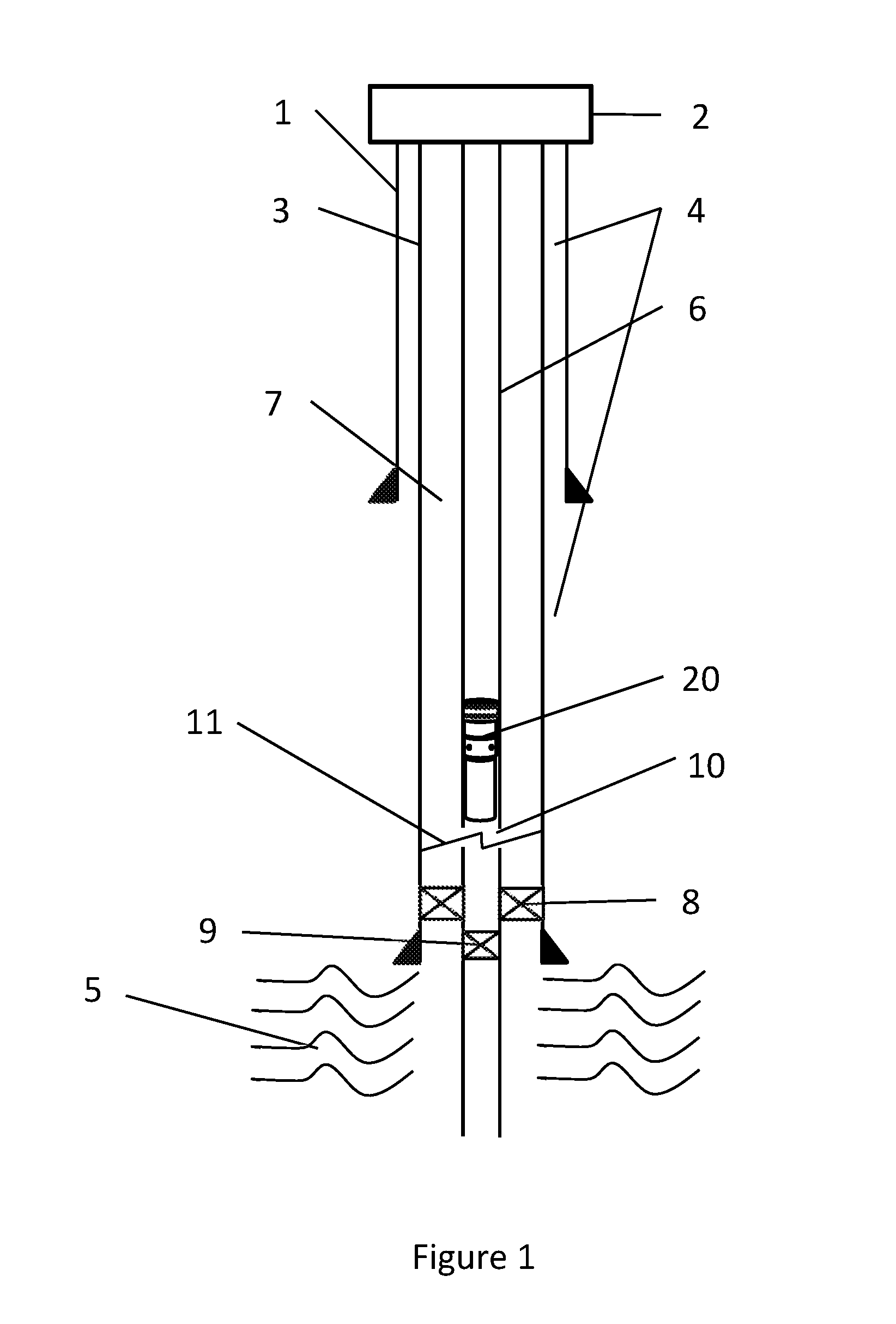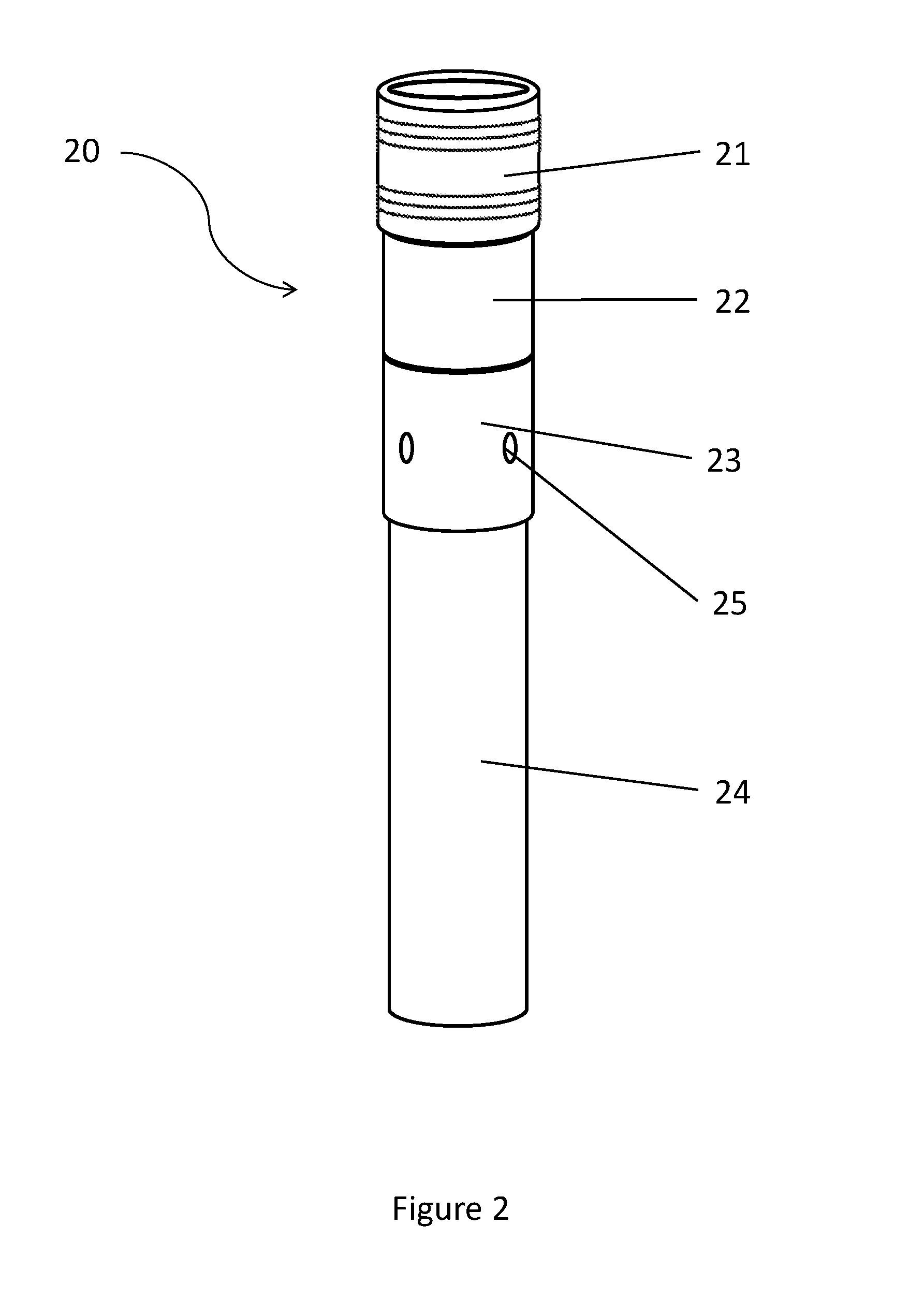Well abandonment using vibration to assist cement placement
a technology of vibration and cement placement, which is applied in the direction of earth-moving drilling, well accessories, sealing/packing, etc., can solve the problems of time-consuming and expensive removal of xmas trees and production tubing, inability to achieve a practical technique, and inability to achieve cost advantages, etc., to achieve the effect of maximizing the vibration degr
- Summary
- Abstract
- Description
- Claims
- Application Information
AI Technical Summary
Benefits of technology
Problems solved by technology
Method used
Image
Examples
example 1
[0069]An onshore trial was performed to assess the feasibility of the agitator assembly comprising a packer and agitator device under operational conditions and to assess the extent of tubing movement generated by the agitator. 9⅝″ casing was run into a test well to approximately 3,200 ft and filled with heavy mud with similar properties to cement used in abandonments. Approximately 3,000 ft of 5½″ tubing was then run into the hole with a pre-set packer and agitator in the tubing. Two black box subs were also installed in the string at 1,000 ft and 2,000 ft behind the agitator. The subs contained accelerometers to record any lateral or axial acceleration generated. The 5½″ tubing was then locked down to simulate a through-tubing abandonment.
[0070]The heavy mud was then pumped around the well at varying flow rates between 110-210 gallons per minute for an extended duration of approximately 6.5 hours. Pressure indications on surface indicated that the agitator was pulsing throughout t...
example 2
[0071]Following successful onshore trials, the focus was moved to performing offshore trials. 3,000 ft of 5½″ open-ended tubing was cemented into 9⅝″ casing under static conditions in Well 1. Cement was placed into the A annulus and final displacement pressure was held to prevent cement from flowing back inside the tubing, meaning the interior of the tubing was left clear. The cement in the A annulus was then logged to assess quantity and quality. The result of this log showed that there was 733 ft out of 2,000 ft of cement that can be termed as acceptable for abandonment purposes.
example 3
[0072]A similar trial was repeated on Well 2 but this time, a similar packer and agitator assembly to the one used in the onshore trial was run into the 5½″ tubing on wire line and set at the bottom of the tubing. 2,000 ft of cement was then pumped through the agitator and into the A annulus. Again, final displacement pressure was held to prevent cement from flowing back inside the tubing, leaving the inside of the tubing clear. The results were then logged for quality and quantity. The results showed that the cement quality was poor and only 10 ft was deemed to be acceptable for abandonment purposes. It is uncertain whether these bad results were due to the poor integrity of the production tubing in this well or the fact no base plug was set for the cement. Either of these are considered by the inventors to be possible causes, or there may be another cause. There is also the possibility that human or mechanical error contributed towards the poor result.
PUM
 Login to View More
Login to View More Abstract
Description
Claims
Application Information
 Login to View More
Login to View More - R&D
- Intellectual Property
- Life Sciences
- Materials
- Tech Scout
- Unparalleled Data Quality
- Higher Quality Content
- 60% Fewer Hallucinations
Browse by: Latest US Patents, China's latest patents, Technical Efficacy Thesaurus, Application Domain, Technology Topic, Popular Technical Reports.
© 2025 PatSnap. All rights reserved.Legal|Privacy policy|Modern Slavery Act Transparency Statement|Sitemap|About US| Contact US: help@patsnap.com



